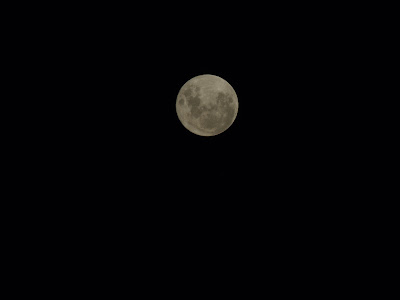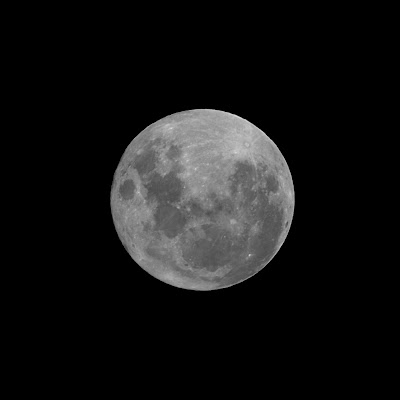
The moon in the image above is taken separately and can be used to add interest for your night photographs.
It is fairly easy to photograph the moon and if you google it you can just get the information you need. This post is meant to be a summary of the equipment you will need and the all the information there is to effectively shoot the moon.
The tutorial comes in 3 parts, the equipment, how to take the pictures and post processing.
1.....First of all, you need to have the following equipment:
a) A sturdy tripod.
This is a no-brainer, a tripod will ensure you can use ISO 100 with noise-free and blur-free images.
a) A 600mm reach telephoto lens.
This is the minimum requirement for me. It can be a prime lens or a zoom lens. You can even use a lens with a tele-converter to achieve the much needed reach. Of course the more the better, at 600mm reach you can already get phenomenal results, though 300mm is still quite usable.
When I previously mentioned 600mm, I meant it in 35mm full frame equivalent. So good news for those using crop sensor DSLR bodies, as you can get more reach by using the crop factor, such as the 70-300 for Nikon or Canon, at 300mm you get at least 450mm already in full frame equivalent. So, further adding a tele-converter can easily get you to the 600mm benchmark.
Olympus is special as their DSLR bodies sensor offer a crop factor of 2x, so when i use my 70-300mm, at 300mm I already get 600mm of reach, in full frame equivalent even without any tele-converters. I did not use a tele-converter, because the lens is not a very sharp one, so adding one will make the image quality suffer.
So, if you have to use a tele-converter, make sure your zoom lens is good enough like the 70-200 f2.8 for Nikon or Canon and use it in a crop sensor camera body. For the best results, use prime lens with a wide aperture, though they are huge and expensive. Food for thought....
That's all you need... A crop sensor camera body with a telephoto reach of 600mm...
2.....After you have the camera system, the next step is to actually take the photo.
a) Firstly, set up your camera on the tripod.
b) If you are using zoom, zoom out to the furthest.
c) Set your camera to manual, the camera's metering will be useless in this situation.
d)If you use the F/16 rule as stated in my previous post, you can set the aperture to F/16, ISO to ISO 100 and the shutter speed 1/100, your exposure should be just right to expose the moon properly. Of course, don't follow this blindly, use you camera's histogram to confirm the exposure. To confirm good exposure, make sure details of the moon surface is visible. Better still, bracket your shots, shoot at several frames at +/- 1 stops of exposure, then choose the right one later.

As you can see from the picture above, is you use the camera's Auto Exposure, there will be no detail on the moon. When this happen, underexpose more until the detail on the moon is revealed and the sky should be totally black.

As you can see from the picture above, this is what good exposure of the moon should look like.
e) Focus manually. You will find that the camera will not be able to focus the moon properly. Use the zoom magnification focus assist to get the perfect focus.
f) Shoot RAW. This will ensure no details is lost when compressing the files they were shot in JPEG.
3.....Now for the post processing.
a) The first thing you should do is to crop the image.
b) Then, convert the picture into black and white. I would recommend you use the channel mixer in Photoshop to convert it to monochrome as you can adjust the red, green and blue to get the best black and white result.
c) Increase the contrast slightly to bring out the details on the moon.
d) Finally, just apply a little bit of sharpening, using unsharp mask in Photoshop.
Your end result should look like this:





2 comments:
impressive..i wish i have a longer zoom lens for this.. T.T
A very big thanks... This is officially my first photography related comment for my blog... hehe... you should get a telephoto lens like the 70-200 sigma f2.8...
Post a Comment